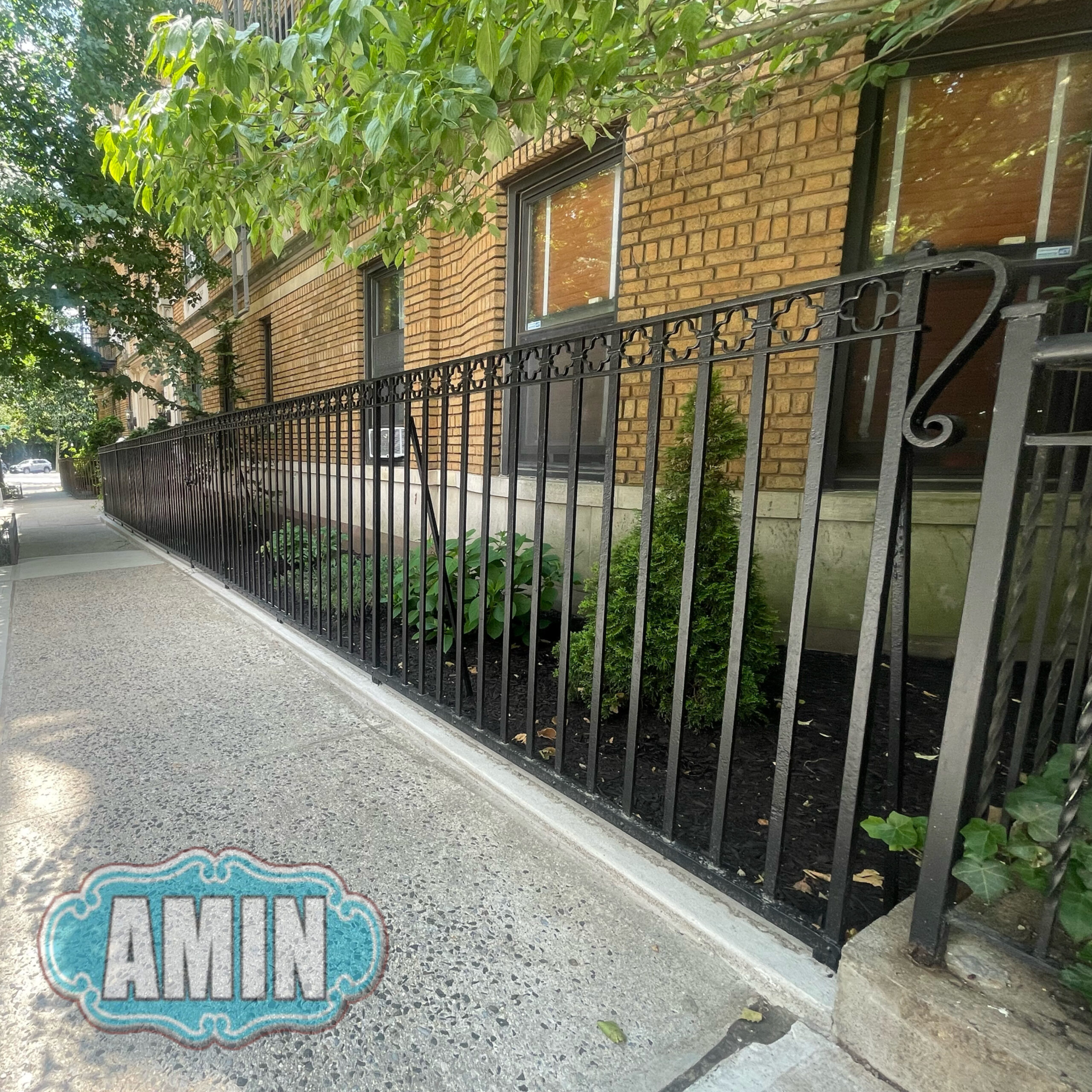FENCE REMOVED AND RE-INSTALLATION
Location : 310 Windsor Pl, Brooklyn, NY 11218
Scrape off paint, Priming and painting:
Scraping off paint is a common task in various situations, such as repainting a surface, restoring old furniture, or preparing surfaces for new finishes. To scrape off paint effectively, you will need a few tools and follow specific steps. Here’s a general overview of the process:
1. Necessary tools: Paint scraper or putty knife, sandpaper or sanding block, drop cloths or plastic sheets, a dust mask, safety goggles, and a utility knife for any necessary repairs or cutting.
2. Prepare the area: Lay down drop cloths or plastic sheets to protect the surrounding surfaces from paint chips and dust. Wear appropriate protective gear like a dust mask and safety goggles.
3. Start scraping: Hold the scraper or putty knife at a slight angle and apply pressure to the surface. Scrape in one direction, moving along the surface systematically. Be careful not to gouge or damage the underlying material.
4. Sanding and refinishing: After scraping off the majority of the paint, you may need to sand the surface to remove any remaining paint residue or smooth out imperfections. Use sandpaper or a sanding block with progressively finer grits to achieve a smooth surface.
5. Clean up: Dispose of paint chips and debris in a proper manner, following local regulations. Clean the area thoroughly and remove any remaining dust or residue.


Priming and Painting:
Priming and painting are crucial steps in achieving a professional and long-lasting finish for various surfaces. Amin Construction is always concern about this:
1. Surface preparation: Before priming and painting, we ensure that the surface is clean, dry, and free of any dust, dirt, or grease. Remove any loose or flaking paint and repair any damages or imperfections using appropriate fillers or putty.
2. Choose the right primer: We select a primer that is suitable for the surface and the type of paint we plan to use. Primers help promote adhesion, provide a smooth base, and improve paint durability. There are different types of primers available for specific surfaces like wood, metal, drywall, or masonry.
3. Apply the primer: Follow the instructions on the primer product for application guidelines. Generally, use a brush or roller to apply an even coat of primer, working in small sections. Allow the primer to dry completely before moving on to the next step.
4. Select the paint: Choose a paint type that is appropriate for the surface and the desired finish. Consider factors like the location, level of durability required, and the color or sheen you want to achieve. Acrylic latex paint is commonly used for interior walls, while oil-based or enamel paints are popular for furniture and trim.
5. Apply the paint: Stir the paint thoroughly before use. Using a brush, roller, or paint sprayer, apply the paint in smooth and even strokes. Work from the top down and use appropriate techniques to avoid visible brush or roller marks. Allow the first coat to dry completely before applying additional coats if needed.
6. Finishing touches: Once the final coat of paint is dry, inspect the surface for any imperfections. Touch up any missed spots or uneven areas. Clean up any paint spills or drips promptly.

Concrete Curb Demolish and Re-build under the Fence:
Demolishing a concrete curb under a fence can be a challenging task, but with the right tools and techniques, it can be accomplished. Here’s a we do that with the process:
1. Safety first: Ensure that you wear appropriate safety gear, including safety goggles, work gloves, and sturdy footwear. If necessary, use ear protection and a dust mask.
2. Clear the area: Remove any objects or debris around the concrete curb and create a clear workspace. This will provide you with ample room to work safely.
3. Assess the situation: Determine the size and thickness of the concrete curb. This information will help you select the right tools and approach for demolition.
4. Gather the necessary tools: Depending on the size and strength of the curb, you may need a combination of tools such as a sledgehammer, jackhammer, chisel, pry bar, and a shovel. A power tool like a demolition hammer or concrete saw can make the process faster and more efficient.
5. Start breaking the curb: Begin by striking the concrete curb with a sledgehammer or jackhammer, focusing on one area at a time. Aim for the edge or joints of the curb as they are generally weaker points. Use a chisel and pry bar to loosen and remove pieces as you go along. If using a jackhammer, follow the manufacturer’s instructions for safe operation.
6. Remove the debris: As you break the concrete curb, clear away the debris and dispose of it properly. Use a shovel or wheelbarrow to collect the broken pieces and transport them to a designated disposal area.
7. Clean up the area: Once the curb is demolished and the debris is removed, clean up the area thoroughly. Sweep or hose down the space to remove any remaining dust or fragments.
We specialized in Brownstone work, Interior Restoration, Roofing, Pointing Landmarks, and restoring New York City.
Services
-
RESTORATION MANAGEMENTRESTORATION MANAGEMENT
-
BROWNSTONE WORKBROWNSTONE WORK
-
INTERIOR CONSTRUCTIONINTERIOR CONSTRUCTION
-
MASORNY WORKMASORNY WORK
